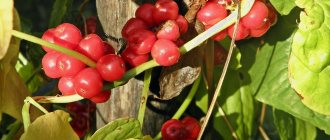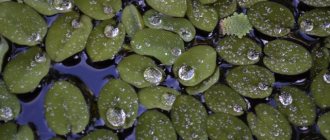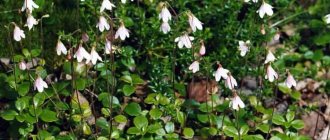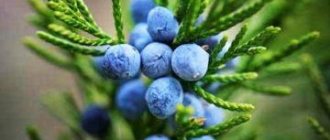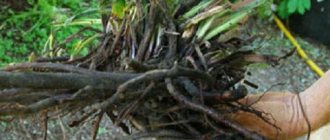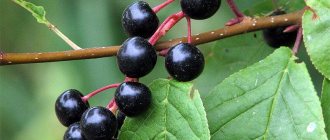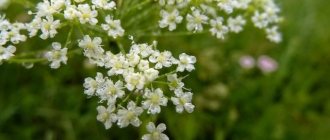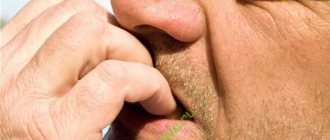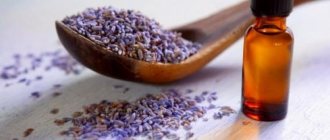- September 4, 2018
- Medicinal plants
- Svetlana Pavlova
Peony evasive, or Maryina root, has several other names - Maryina berries, Maryina grass, heart berries and extraordinary peony, so named for the beauty of the flowers and the medicinal properties of the plant. In the wild, peony decorates the edges of coniferous, mixed and small-leaved forests. For medicinal purposes, rhizomes, seeds and roots of the plant are used, and less often flowers and leaves. It is used in official and alternative medicine. Preparations containing peony raw materials are used to treat many diseases, and they are also used for cosmetic purposes to nourish hair and care for the face.
Distribution area
The evasive peony can be found in Central Asia, Transbaikalia, the northern regions of the European part of Russia, the Urals and throughout the territory up to the Arctic Circle. This frost-resistant species is perfectly used to decorate the streets of Yakutia. Wild bushes prefer flat forest lands and humus-rich soils. It often grows in separate bushes, but sometimes small thickets are found. The peony is in the Red Book of Russia and Sakhalin and is considered an endangered species.
In gardening it is grown as an ornamental and medicinal flowering plant. It reproduces easily and is not susceptible to gray rot. Peony is able to survive in shaded areas of the garden and delight with lush flowering. If you follow basic rules of care in a permanent place, it grows up to 50 years. Every year (after May 15), the bush resembles a huge bright bouquet, which contains up to thirty charming flowers.
Description of the plant
Peony evasive, or marina root, is a herbaceous perennial plant, the height of which reaches up to one and a half meters, belongs to the Peony family. It has powerful tuberous, spindle-shaped roots of a reddish-brown color. When cut they are white, but in air they quickly acquire a pinkish-brown tint, and the edge becomes purple.
The taste of the roots is sweetish with a strong, peculiar odor of methyl salicylate. The plant consists of several thick, erect, convex-ribbed, single-flowered stems, covered with leaf scales and colored pink-purple at the base. The leaves of the evasive peony are alternate and petiolate, about 30 cm long. Flowers with pink-red petals with a diameter of 8 to 13 cm have a weak specific odor. Blooms in May-June. The fruit consists of 3-5 large multi-seeded leaflets with a star-shaped arrangement. The seeds are black with a shiny surface, elliptical in shape, up to 7 mm long. Fruit ripening occurs in the first ten days of September. Propagated by rhizomes and seeds.
Procurement of peony raw materials
The whole plant is used as a healing agent. To effectively use the medicinal qualities of the evasive peony, it is necessary to properly collect and dry the raw materials. The grass of the plant (buds, leaves and stems) is cut off in July with a sharp knife. The petals are prepared before they fall. All collected raw materials are dried in a well-ventilated area under a canopy. After drying, they are crushed and stored in linen bags. It is better to put the petals in dark boxes. The roots can be harvested throughout the growing season, but experts recommend this procedure be carried out in the fall, when a large amount of healing substances accumulates in them.
The roots are cleared of soil, washed with cold running water and cut into pieces 10-15 centimeters long and two to three centimeters thick. Drying the underground parts of the peony (marya root) is carried out under a canopy in the air until they become brittle. Then they are dried in a drying chamber at a temperature of 45 to 60 degrees Celsius. Once ready, the raw material has a pungent odor, a sweetish, astringent taste and a dark brown or brownish-yellow color. The shelf life is three years. In one place, peony harvesting is carried out once every 5-6 years. The roots and aerial parts are dried separately.
The use of peony evasive in cosmetology
The medicinal properties of marina root are used not only for ailments. With the help of the plant you can strengthen weakened hair and take care of the condition of the skin:
- Based on the flowers and roots of the evasive peony, decoctions and infusions are prepared for rinsing hair after washing. Maryin root should be brewed in standard proportions - 500 ml of water per 50 g of dry raw material. With the use of home remedies, curls begin to grow thicker and acquire a healthy shine.
- For dry skin, you can prepare peony oil - pour the petals with olive base so that it covers the flowers by 1 cm, and leave for 2-3 days. The finished product is applied to the face for 20 minutes three times a week.
- For oily skin, you can use a regular alcohol tincture - 50 g of roots or flowers per 500 ml of vodka. The remedy is used as a lotion, evading peony is good for acne and acne, cleanses and tightens pores.
Decoctions and water infusions of evasive peony are used for hair care
Any cosmetic products made from marina root should be used regularly - 2-3 times a week.
We recommend reading: What are the benefits of castor oil, instructions for use at home
Content of nutrients in the plant
The rhizome and stem of the peony contain the following organic substances:
- Salicylic acid is a natural anti-inflammatory agent.
- Glycosides are carbohydrates of plant origin from peony, the therapeutic effect of which ensures the proper functioning of the cardiovascular system.
- Flavonoids – help produce estrogen during menopause.
- Essential oils – help normalize the functioning of the central nervous system, providing a sedative effect.
- Benzoic acid is a natural antibacterial agent that destroys fungi, viruses and pathogens.
- Minerals – the plant contains most of the salts and minerals necessary for the normal functioning of the individual’s body.
All of the above substances have a beneficial effect on maintaining the body in working condition.
Medicinal properties of peony evasive
The plant has many healing substances, so preparations made from it are used for:
- Relieves spasms and seizures - normalization of nerve impulses occurs due to anticonvulsant and antispasmodic properties at the same time.
- Anesthesia – used to suppress painful sensations of various origins.
- Relief from nervous excitability - acting as a natural antidepressant, helps to quickly relieve depressed mood and fatigue.
- Normalization of the circulatory system - thanks to the hemostatic properties, blood loss is reduced, and wounds heal quickly.
- Destroying bacteria and viruses - natural antibiotics actively fight pathogenic microorganisms and are used to treat inflammation of various types.
In addition, the properties of peony evasive are used to stimulate metabolic processes, increase stomach acidity, prevent and treat malignant neoplasms, increase efficiency, treat dermatitis, and prevent alcoholism.
Medicinal properties of peony evasive tincture
Most often, evading peony in folk medicine is used in the form of a 10% tincture. The medicinal components of plant materials dissolve well in an alcohol base. You can use the medicine:
- for nervous, vegetative-vascular and emotional disorders;
- for digestive ailments and slow metabolism;
- in case of hormonal imbalances and poor functioning of the reproductive system;
- for gout, kidney and liver diseases;
- for gynecological diseases in women;
- for epilepsy and seizures;
- with weakened blood vessels and frequent pressure surges;
- for joint diseases.
Tincture of evading peony demonstrates the strongest healing effect
Maryin root helps against frequent migraines. In many cases, headaches are caused by fluctuations in blood pressure, so the healing tincture of peony acts almost instantly.
Advice! You should use alcohol for no longer than a month. A single dosage should not exceed 40 drops, and the medicine can be taken up to 3 times a day.
Indications for use
The positive effect of using a medicinal plant has been noticed for a long time. The plant is successfully used for the following pathological conditions:
- Dysfunctions of the autonomic nervous system – neuroses of various origins, vegetative-vascular dystonia.
- Gynecological – in the treatment of menopausal symptoms, menstrual irregularities, benign and malignant formations in the uterus.
- Heart and blood vessels - in the complex treatment of hypertension, as well as cardiac ischemia.
- Chronic alcoholism – used as a sedative.
- Mental – for the treatment of convulsions during epileptic seizures, depression, stressful situations.
- Central nervous system – relieves irritability and tension, fears, increased anxiety, helps cope with fatigue.
- Urology – problems with urination.
- Gastrointestinal tract - peptic ulcers of the stomach and duodenum, gastritis, diarrhea.
In addition, peony is used in the treatment of lichen planus, which is aggravated by nervous disorders.
Use of peony officinalis
Peony is not very widespread in folk medicine, but it is still used in the treatment of many diseases and to eliminate ailments. For example, a decoction of peony rhizomes will help cope with a disrupted menstrual cycle. For mothers who produce insufficient milk in their breasts, a decoction of the plant's rhizomes is also recommended.
Peony has expectorant, diuretic and appetite-improving properties.
It is recommended for use for stomach ulcers, stomach cancer or spastic colitis. A decoction of the plant's rhizomes helps in the treatment of tuberculosis, colds, pneumonia and bronchitis. Peony preparations are used as a diaphoretic and disinfectant. A powder is made from the roots, which is included in ointments for healing wounds and treating bone fractures.
Peony root tincture is recommended for insomnia, increased excitability of the nervous system and other disorders in the nervous system. The drug has a calming effect.
Peony decoction for epilepsy.
Take 30 grams of dry rhizomes of the plant and chop them. Next, pour the powder from the roots with 4 cups of water, put on the fire until it boils, then remove from the heat and strain. When chilled, the decoction is taken 100 ml three times a day. The same medicine can be treated in cases of cramps of the digestive tract, gout and nervous excitability. The course of treatment is 30 days, after which they take a break for 15–20 days and repeat the course again.
Peony tincture.
To prepare it, you need to take 10 grams of the plant’s rhizomes and pour 100 ml of vodka over them. We leave the composition to infuse for 2 weeks. After straining the finished tincture, take it 30 or 40 drops, diluted with a small amount of water, three times a day.
Contraindications for the use of the plant
Before using any plant, an adult must be familiar with the medicinal properties and contraindications. Peony evasive is not recommended for use if the patient:
- Arterial hypotension – pressure less than 120 mmHg. Art., since taking the plant will aggravate the situation.
- Increased stomach acidity - peony-based preparations promote the production of hydrochloric acid and gastric juice, increasing acidity.
- The functions of the liver are impaired - the body will not be completely neutralized from the components of the plant.
- Kidney diseases have been identified - plant substances with poor kidney function will accumulate in the body, causing side effects.
- Pregnancy and breastfeeding - marin root is a poisonous plant.
- Allergy – it is quite possible for the body to intensify its reaction to substances contained in the plant.
In addition, it should be noted that taking medications can cause apathy, drowsiness, slow reaction, decreased attention, nausea, vomiting, abdominal pain and irritation of the gastric mucosa.
Using factory-made forms from extraordinary peony
In pharmacies you can purchase several medicines made from peony:
- dry extract in tablets;
- vegetable raw materials in briquettes;
- alcohol tincture.
All forms are classified as sedatives, the most popular of which is alcohol tincture. It has a long shelf life, is convenient to use during a long course of treatment, and can be used externally. In addition to its calming effect, it has:
- painkillers;
- tonic;
- anti-inflammatory;
- bactericidal;
- general strengthening;
- antimicrobial;
- antispasmodic;
- anticonvulsant.
Using the tincture
Considering the beneficial properties of peony evasive, the use of tincture is indicated for:
- Functional disorders of the central nervous system - relieves nervousness, chronic fatigue, attacks of anger and irritability. Helps with autonomic dysfunction, sleep disorders, cerebral palsy.
- Digestive disorders - taken for gastritis with low acidity, spasmodic pain, diarrhea, loss of appetite, intoxication.
- Respiratory diseases - recommended as an expectorant, drunk for bronchitis, pneumonia, tuberculosis.
- Gynecological pathologies - helps with mastopathy, uterine fibroids, infertility.
- Normalization of water-salt balance - used to remove excess salts from joint diseases, normalizes metabolic processes.
- External skin diseases - as an antiseptic and antimicrobial agent for the treatment of erosions, ulcers, cracks, ulcers.
In case of an overdose, blood pressure drops sharply, drowsiness and lethargy, dizziness and nausea occur. If these symptoms appear, you should immediately stop taking the tincture and seek help from a medical facility.
Medicinal properties
In official medicine, the plant is used to prepare tinctures; its shoots and root system are used. Doctors have proven that the pharmacological agents that the inflorescences contain:
- have a calming effect, have a good effect on reducing hypertension and vasodilation;
- shoots, foliage and inflorescences are used to prevent neurosis and sleep imbalance;
- stimulate the secretion of gastric juice.
Traditional medicine recipes indicate the need to take tinctures for:
- migraines;
- diseases of the gastrointestinal tract;
- liver diseases;
- cervical erosion;
Also, plant extract is often added to creams and hair washes. In China, the roots are used to treat oncology, and in Mongolia the plant is used as an antidote for snake bites.
5 / 5 ( 1 voice )
Peony evasive: instructions for use
To prepare the tincture, grass, rhizomes and roots of the plant are used; ethanol is used as an auxiliary substance. Release form: bottles made of orange glass with a capacity of 25 and 50 ml. They are equipped with a dispenser and are packaged in a cardboard box. Let's consider the instructions for using the tincture as a sedative for neurasthenia and sleep problems:
- Adults take 15-20 drops two to three times a day a quarter of an hour before meals. The duration of the treatment course depends on the individual characteristics of each patient and the severity of the disease, on average it is two weeks. If necessary, treatment is repeated after a break of two to three months after consulting a doctor.
- Side effects - general weakness, drowsiness, low blood pressure, allergies.
- Contraindications – renal and liver failure, intolerance to the components of the drug, not recommended for children under twelve years of age, pregnant and lactating women.
- Special instructions: when using the tincture, you should avoid driving vehicles and operating dangerous machinery. Long-term use in large doses causes an increase in gastric acidity. During storage, a sediment forms, so the contents of the bottle must be shaken before use.
- Drug interactions - the tincture weakens the effect of central nervous system tonics and enhances the effect of antispasmodics, hypnotics and sedatives. Ethyl alcohol may change the effects of other medications taken at the same time.
- Dispensing conditions - the drug is available without a prescription.
- The shelf life of the drug is two years, when stored in a place protected from light and at a temperature of no more than 25 degrees Celsius.
When using the tincture for the treatment of other diseases, the dosage of the drug is indicated in the instructions for the dosage of the drug. And before using it, you should consult a specialist.
How to drink peony evasive (maryin root)
Depending on the specific disease, the rules for preparing the tincture may vary. In addition, you need to know the exact dosages of folk remedies for various ailments.
We recommend reading: Beneficial properties of Anzura (Suvorov) onion-garlic and contraindications
From pressure
Tannins in the evasive peony tincture improve the elasticity of blood vessels. For hypertension, the remedy has a complex effect, relieves spasms and accelerates blood flow. Prepare the medicine as follows:
- 50 g of dry peony root is poured with 500 ml of vodka;
- shake the product and leave for 3 weeks in a dark place;
- filter before use.
You need to drink marin root three times a day, 30 drops on an empty stomach. Treatment is continued for a month, then a break is taken for 10 days and, if necessary, the course is repeated.
For insomnia and nerves
The benefits of evasive peony tincture are in demand for neuroses and sleep disorders. The remedy is prepared in a similar way:
- 50 g of raw material is poured with half a liter of vodka;
- infuse the product for 2 weeks in the dark, shaking from time to time;
- At the end of the period, filter.
The medicine should be taken before bedtime; 3 small spoons of tincture are diluted in 50 ml of water. The product quickly relieves tension and helps you relax.
For mastopathy
The medicinal properties of marina root in gynecology, and in particular for mastopathy, are most widely known. For female diseases, a multi-component tincture is made from several ingredients:
- mix peony and licorice roots - 1 part each;
- add tea penny in a volume of 2 parts;
- pour 100 g of the mixture with a liter of vodka.
Dosages of medicinal tincture of marina root are very small, no more than 40 drops per dose
You need to infuse the product for 2 weeks in the dark and cool. The finished medicinal drink is filtered and then taken three times a day, a small spoon.
You need to continue the course of therapy for 2 months, and it is very important to start drinking the tincture on the 4th day of the cycle. When taken correctly, the remedy will help get rid of pain and swelling due to mastopathy.
During menopause
The use of tincture of marina root in vodka is allowed during menopause. The therapeutic benefit is that the drink has a sedative effect, tones and normalizes hormonal levels. Prepare the product as follows:
- 3 large spoons of dried peony flowers are poured with 500 ml of vodka;
- infuse the medicinal liquid for 21 days;
- the finished medicinal product is filtered.
It is recommended to drink a strong tincture three times a day, 25 drops on an empty stomach. The course of therapy lasts a month, during which time the mood levels out and the hot flashes characteristic of menopause go away.
To relieve joint pain
Evading peony has analgesic and anti-inflammatory properties. The instructions for using marina root tincture recommend using the remedy for joint ailments - radiculitis, arthritis, rheumatism, and inflammation of the sciatic nerve.
Peony tincture can be used to rub joints
They use a classic remedy based on dried flowers for therapy - 50 g of raw material is poured into 500 ml of alcohol base and left for 2 weeks. But they use the healing liquid externally - rub the sore joints several times a day. The beneficial substances in the composition penetrate into the tissues through the skin and quickly relieve pain.
For epilepsy
A valuable area of application for evasive peony is the treatment of epilepsy. A tincture based on the roots and flowers of the plant has strong anticonvulsant properties, but has a minimum of side effects. It is used like this:
- 50 g of dry raw materials are kept in 500 ml of vodka for 2 weeks;
- after the expiration of the period, the medicinal product is filtered;
- take 1 small spoon three times a day on an empty stomach.
Attention! Treatment of epilepsy with the help of evasive peony should only be carried out with the permission of a doctor and in combination with official medications.
Using peony in folk medicine: recipes
At home, tinctures, infusions and decoctions are prepared from peony for pain relief and seizure relief. In addition, it is used as a bactericidal agent, as well as to stimulate the production of hydrochloric acid, which improves appetite and many other purposes. Preparation of medicines:
- Infusion. Take a teaspoon of dry roots for three glasses of boiling water. Infuse, tightly wrapped, strain. Use a tablespoon a quarter of an hour before meals three times a day.
- Infusion for compresses. Pour a tablespoon of crushed dry roots into a glass of boiling water, place in a water bath for 15 minutes, cool, strain and make compresses for skin diseases.
- Decoction. Mix crushed dry roots and leaves of peony in equal proportions. Pour one coffee spoon of raw material into 0.5 liters of boiling water. Boil over low heat for five minutes and drink a cup of coffee three times a day.
- Tincture. Dry roots (10 g) are infused with 100 g of vodka for three weeks in a dark place. Take 30 drops three times a day. The course of treatment is a month. If necessary, repeat after a ten-day break. Keep refrigerated.
Before use, you should consult your doctor. Contraindications for products from peony evasive are liver and kidney diseases, allergies, age under 12 years, pregnancy and breastfeeding.
Peony root in folk medicine
The rhizomes and roots of the plant are harvested for medicinal purposes.
Peony roots contain starch, alkaloids, salicylic and benzoic acids, salicin glycoside, essential oil, which includes salicylate and peonin. Avicenna recommended using fresh peony roots internally for pain and burning in the stomach. In Rus', peony was used to treat gout, rheumatism, and various gastrointestinal diseases. In Siberia, peony has long been used for stomach ulcers, bleeding, strokes, and epilepsy.
In Tibetan medicine, peony roots are used for nervous diseases, epilepsy, gastritis, uterine bleeding, as well as for coughs, toothaches, rheumatism, and gout. In China, peony is used as a choleretic agent for pulmonary tuberculosis, leukemia, and achylia. In Mongolia, marin root is prescribed for kidney diseases. In Arabic medicine as an antitumor agent.
Currently, medicine has established that the plant has a calming effect (it is used for neuroses, neurasthenia, psychasthenia, insomnia, irritability, etc.), analgesic and bactericidal effects. For medicinal purposes, peony tincture is prescribed for stomach cramps, low acidity, and menstrual irregularities, as a milk extractor. Patients with eczema, neurodermatitis, and psoriasis are prescribed peony tincture 10-30 drops 3 times a day for 3 weeks.
Peony preparations prolong the effect of anesthesia. Peony tincture does not have a negative effect on blood pressure, heart rate, or breathing. But since this plant is very poisonous, it should be taken orally with caution, especially during pregnancy, strictly observing the dosage!
Tincture from peony grass is less effective than from roots and rhizomes. The bactericidal effect of peony is used in dermatology to treat purulent skin diseases, erosion, as well as skin tuberculosis.

